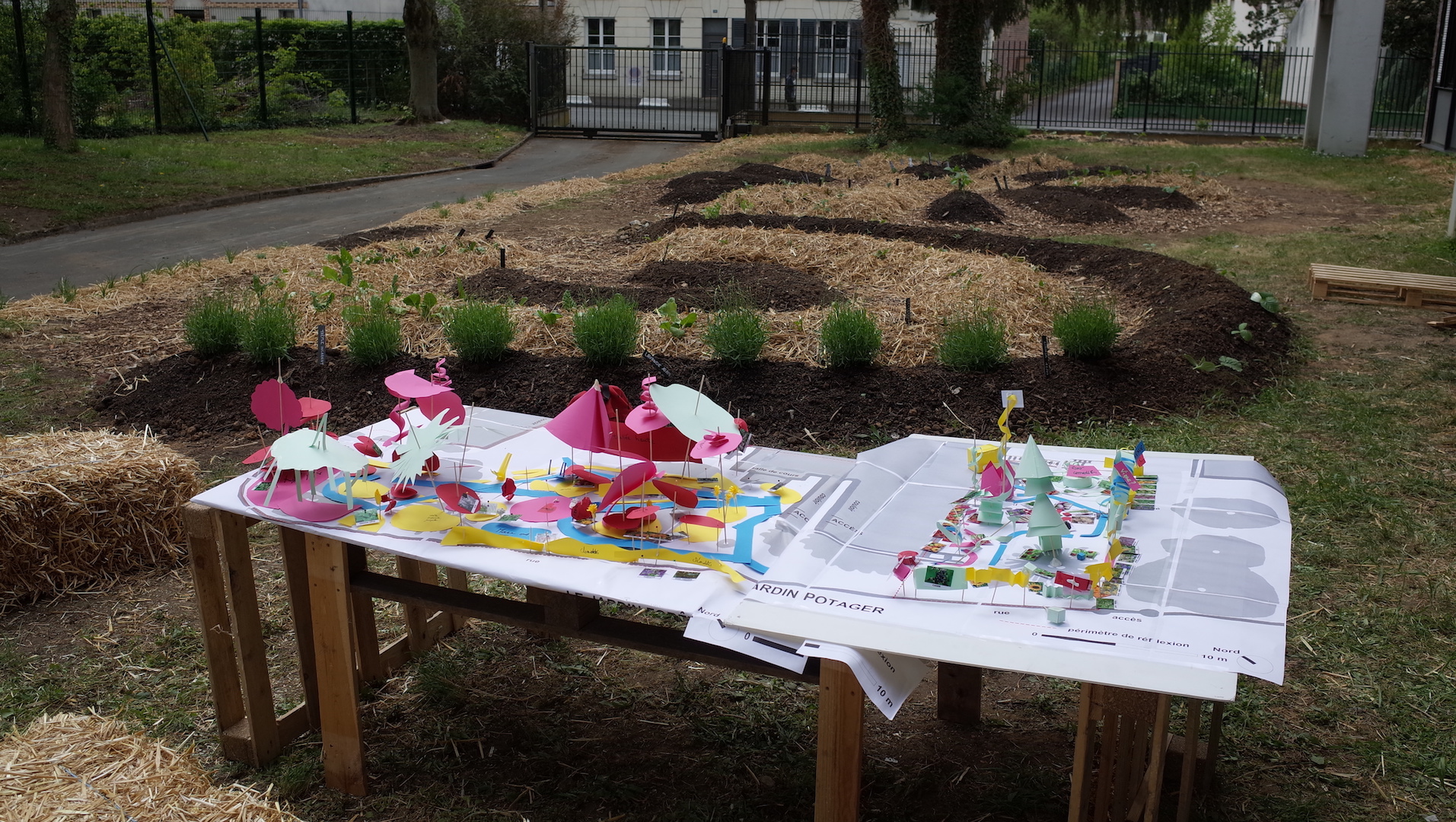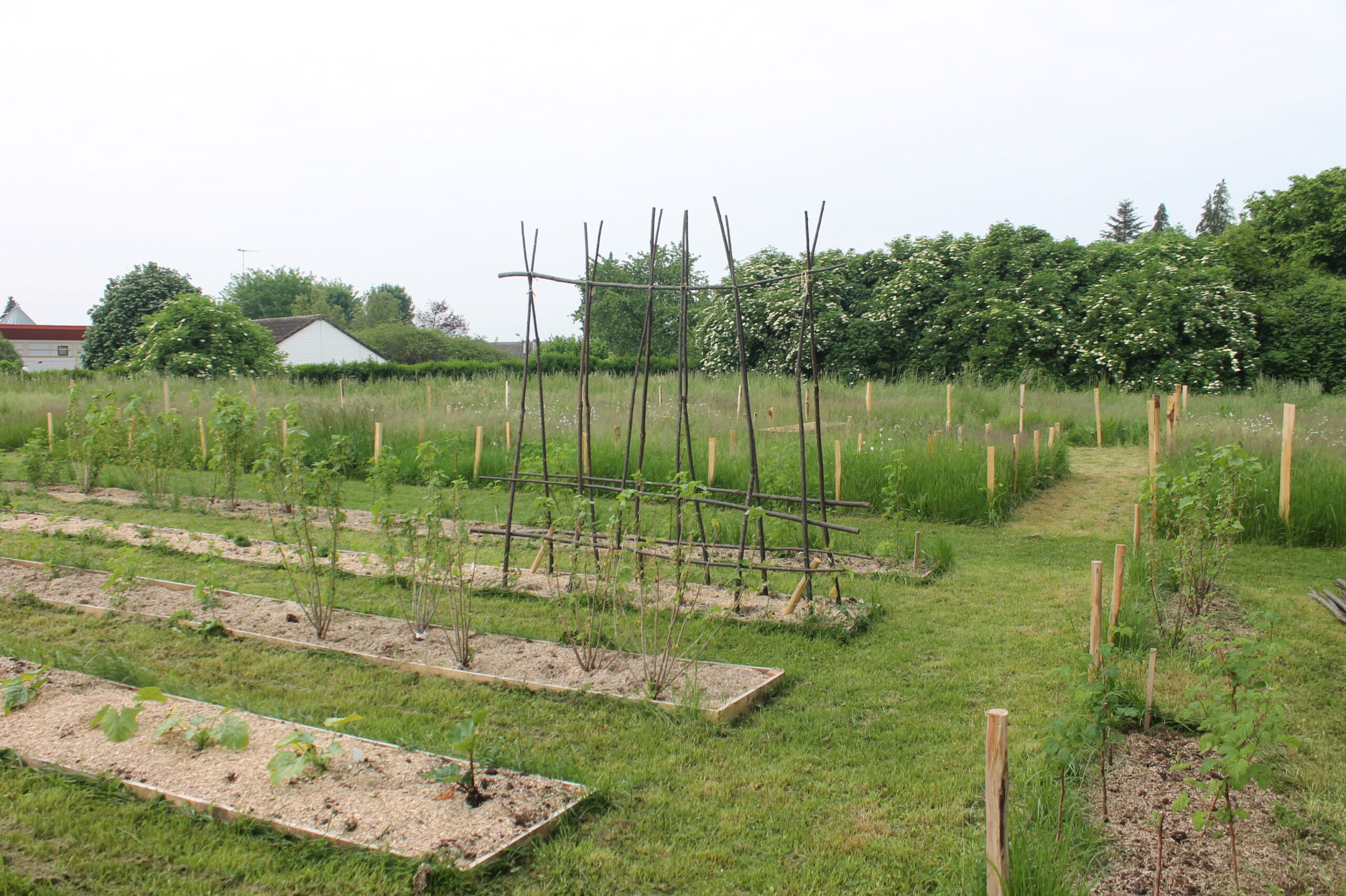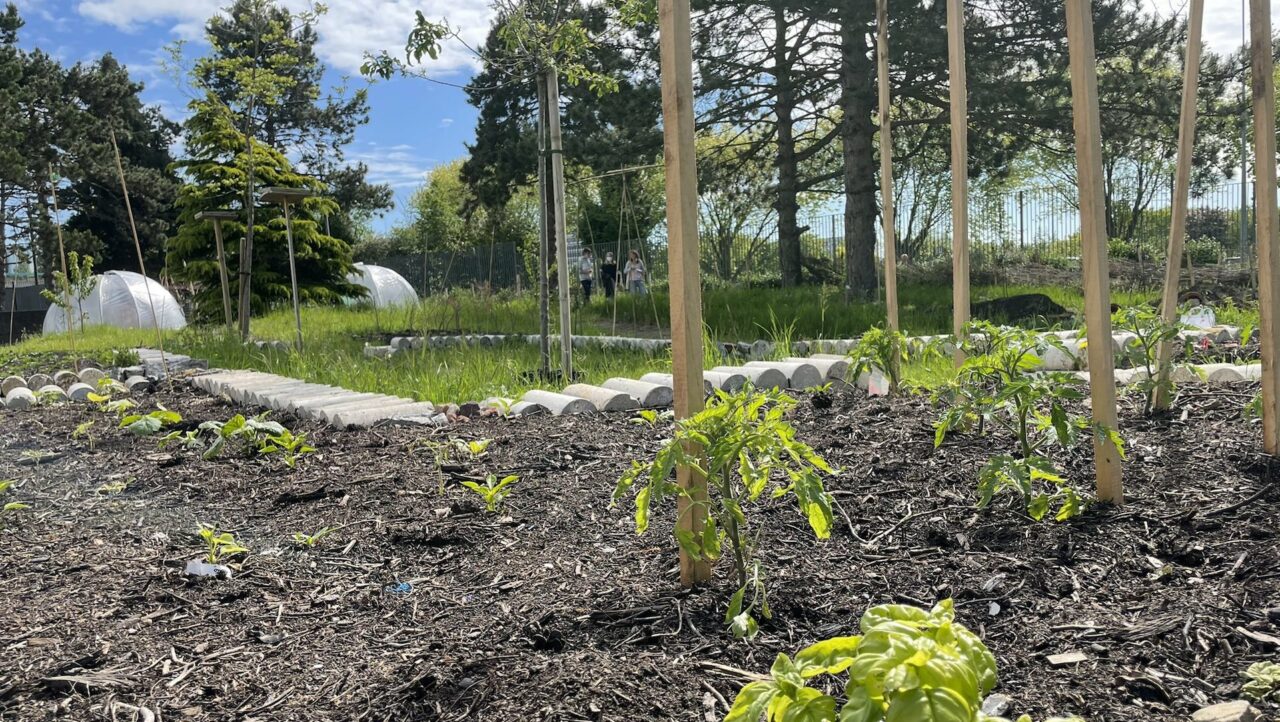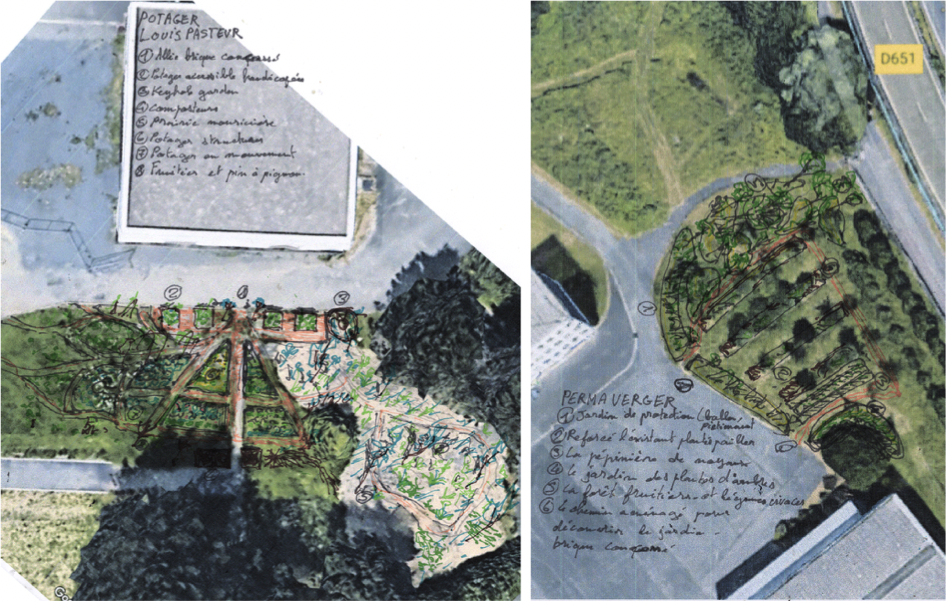Vegetable gardens in High Schools > Léonard Nguyen Van Thé, 2020 – 2021
“The Garden in a school setting is above all a place of awareness and education of the gaze, a place where dreams and hopes for a better land are combined. But very often the students and the teaching team, although full of goodwill, are often helpless by a school cycle that is not that of plants… Following observations, discussions through collaborative tools, and at as the meetings-actions progress, the garden takes shape… Faced with the fragmentation of the spaces of the Lycée Pasteur, we see a woven orchard unfolding : how to link these spaces to the vegetable pine forest ? How can you possibly create a vegetable walk ? Participation in this type of questioning can help the project evolve.
The approach is based on the choice of major lines :
– reuse : use good quality materials from the construction industry or the food industry at low cost. They allow you to add a little history to sites that lack it or to find a local connection. Building with the materials from the end of the world does not make sense because of their environmental impact and the money that does not stay on the territory. The walkways could be made with crushed tile. The pergolas and trellises in reclaimed metal.
– plants: the use of perennial vegetables and aromatic plants requiring little maintenance, promote the donation and exchange of plants. These plant choices will be displayed and discussed with all those involved in the project. Planting vegetables consumed in other cultures, the Caucasus, Korea, North America, allows the discovery of new tastes sensitized to novelty, to accept what is foreign or different. Some examples of perennial vegetables : tuberous wisteria, chervis, maceron, egopod, archaud, cardoon, sorrel, aralia Elata, rhubarb… Set up a grain library in partnership with the CDI.
It is Gilles Clément’s idea of ”moving garden” that is privileged. How can this idea, which first applied to ornamental gardens, be applied to a vegetable garden ? Large perennials or annuals or a carpet of small plants which can be reseed, appear or die, the paths and beds then move and change the garden. The plants become a little the landscape collaborators of the garden. Every two to three years, the garden can be redesigned. This allows you to learn more about the garden. In a classic garden, the large flowering vegetable would have been removed and replaced with a younger crop, I prefer it to be reseeded.
Also, the idea of the genius of places is developed. How to make a vegetable garden or improve an orchard ? The first thing to do is to ask questions to the site, the plants, the stones that inhabit the site. Wind, where are you from ? Home, what time do you shade me ? Who says pine says mediocre soil but then, pine with whom do you like to growc ? Is it the Siberian pine or the Korean pine that could become your companion ? Besides, they both produce pine nuts and in the pine forest, what grows ? Rosemary and thyme etc… You, black nightshade and goosefoot, two plants considered to be weeds, are vegetables in their region of origin. They tell me that there is nitrogen so that I can grow tomatoes and squash without any problem !”
Project by Léonard Nguyen Van Thé
The artist
Léonard Nguyen Van Thé





